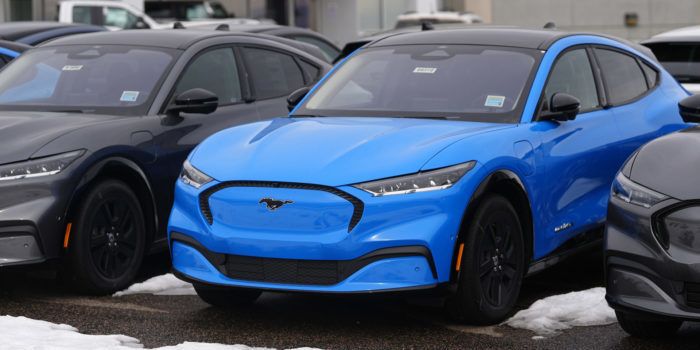(Headline USA) More than 4,700 automobile dealerships across the United States urged President Joe Biden in a letter Thursday to halt the Environmental Protection Agency’s efforts to enforce stricter vehicle-pollution standards.
The missive comes just weeks before the agency’s expected ruling on its tailpipe-emissions proposal, which addresses both climate change and pollutants that are harmful to health.
The EPA’s upcoming ruling, proposed last April, could codify the agency’s strictest-ever tailpipe emissions limits.
The draconian emissions standards are one in an array of regulations and incentives intended to jolt the automobile industry away from gas-powered vehicles and shift to more electric vehicles.
Most automakers around the globe have pledged hundreds of billions of dollars to transition to all-electric new vehicle sales in the coming decade. Last year, U.S. EV sales overall grew 47% to a record 1.2 million, according to Motorintelligence.com. EVs are seeing year-over-year growth, but only hit 7.6% of overall market share in 2023.
However, consumer demand for EVs has failed to follow suit due to the lingering issues surrounding the battery-powered cars—including the dearth of charging stations, and the amount of time and energy required to recharge. Many have reported that the cars fail to run altogether in severe weather, such as recent winter storms across the central U.S.
Nearly 4,000 dealerships of the nearly 17,000 franchised shops nationwide asked Biden to “tap the brakes” on the EPA proposal in a November letter, referring to the rules as an “electric vehicle mandate.” House Republicans approved a bill in December to block the pollution limits and also called the rules a mandate.
The signers of this week’s letter said the supply of EVs on dealer lots is twice that of internal combustion engine vehicles, and that they won’t be able to sell EVs at the rate the regulations would require.
“It is uncontestable that the combination of fewer tax incentives, a woefully inadequate charging infrastructure, and insufficient consumer demand makes the proposed electric vehicle mandate completely unrealistic,” the letter said.
The dealerships said Thursday that the Biden administration did not respond to their first letter, sent on Nov. 28.
An EPA spokesperson said the agency cannot comment as the proposal is currently in the interagency review process.
“President Biden is investing in a future that is made in America by American workers as we position the United States to lead the clean energy future,” a White House spokesperson said in a statement Thursday.
“More Americans are buying EVs every day—with EV sales rising faster than traditional gas-powered cars—as the President’s Inflation Reduction Act makes EVs more affordable and helps Americans save money when driving,” the spokesperson claimed, while ignoring the fact that the market is now oversaturated with unwanted EVs.
The administration has an ambitious goal to reduce the carbon-dioxide emissions that come from passenger cars and trucks, which constitute 17% of all man-made U.S. emissions, according to the EPA. The regulation also limits hydrocarbons, nitrogen oxides, and particulate matter into the air.
The EPA says its proposed regulations could mean that up to two out of every three vehicles sold in the U.S. are electric by 2032. That’s higher than the administration’s target of 50% set two years ago.
The EPA’s tailpipe-pollution limits wouldn’t require automakers to sell a specific number of EVs every year.
Automakers can meet EPA regulations not just through pure-electric vehicle sales, but also through a sales mix including hybrid and plug-in hybrid electric vehicles, plus cleaner internal-combustion engine vehicles.
The EPA has also said that the auto industry could employ widespread use of particulate filters, which mitigate the soot emitted from conventional gasoline-fueled engines.
“In order to stay on track to meeting overall climate policy goals that have been adopted by the country, I think it’s important to be aggressive in this sector where you have the technology, progress is being made, there’s momentum in markets,” said Jessika Trancik, a professor in energy studies at the Massachusetts Institute of Technology.
Trancik claimed that the government demands on the industry promised to be a “really important part” in reaching not only its goals for reducing greenhouse gases by 2030—part of the Obama-era Paris Climate Accord—but of continuing to strive even further toward a net-zero emissions goal with another benchmark in 2050.
“There are a number of different ways you can improve efficiencies and reduce emissions,” Trancik said. But, “If you want to meet those targets, fully electric vehicles are probably going to be a really important tool, at least in part, to allow for that because they do offer the greatest emissions cuts.”
The EPA is also proposing regulations for medium- and heavy-duty trucks, and the government’s National Highway Traffic Safety Administration has separately proposed a fuel-economy increase.
Adapted from reporting by the Associated Press

